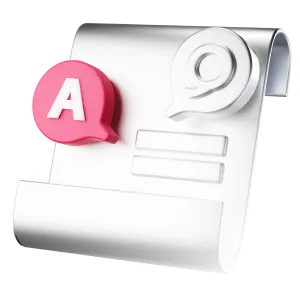If you get a nail in your tire or walk outside to a flat, it can cost you an average of $10 to $50 for a patch.
Not all tires can be fixed, but if it can, your tire repair costs will depend on the extent of the damage, the type of repair required and the service provider you choose.
Factors that influence tire patch costs
The cost to patch a damaged tire depends on how it was damaged, where the damage occurs, where you take your vehicle and whether the tire can be repaired in the first place.
If your tire is damaged in an area that already has a patch, you may have fewer options this time around. Your tire may also require a combination of repairs, such as a plug covered by a patch.
Here are the main factors that affect the cost of a tire patch.
Type of tire
Some tires may be more difficult and expensive to repair than others, such as oversized tires with large tread, electric car tires or specialized sports tires.
Repair method
Some damaged areas might need a tire patch while others could get away with a tire plug. If you require a combination of the two, the repair may cost more.
Your location
Where you live may affect any number of vehicle repair costs, including tire patches and plugs. Shops in urban areas may charge more for these types of services than rural areas, for example, and towns with only a handful of service centers may charge more than if there is ample competition.
Tire maintenance can save you money.To make your tires last longer and perform well it’s important to keep them properly inflated. Buying a battery-powered tire inflator is a great investment and allows you to pump up your tires (and your bike tires) at home. Also, make sure to rotate your tires at the required intervals so they will wear evenly.
Signs you need a new tire
In some cases, the question may not be how much it’ll cost to patch your tire, but whether you can repair it at all. Here are some signs that you may need to replace the tire entirely.
- Poor tire condition. Most reputable shops won’t repair a tire that’s too old or worn, or one that already shows signs of structural issues. If your tire has too many miles, a low tread depth or is otherwise in bad condition may need to be replaced.
- Severe damage. Holes over a certain size can’t be repaired safely. If your tire’s damage is too deep, irregular, too large or compromises the structural integrity of the tire, you may need to replace the tire instead.
- Side punctures. Tire damage can only be repaired if it’s located in the tread area of the tire, or the portion of the tire that touches the roadway. If you get a nail in your sidewall it often can’t be repaired.
- Driving on a flat tire. If your tire goes flat at highway speeds, and you have to drive to the side of the road or to an exit, it’s likely the tire will be unrepairable.
What is a tire patch?
A tire patch is a type of internal repair for a punctured tire, which is usually applied from the inside after removing the tire from the wheel or rim. It seals both the inner liner of the tire and the hole itself to restore the tire’s structural integrity after a tire is damaged by glass, nails or screws, thorns or other roadway hazards.
A tire patch is often combined with a plug to better repair and seal the puncture. Tire plugs are inserted into the hole from the outside and may be considered a temporary fix, depending on the extent of the damage.
How often should you get a tire patch?
While the average driver needs to replace a vehicle’s tires at least every six years or 50,000 miles, tire patches, plugs and other repairs are only required if you notice damage.
Most newer cars have tire pressure monitoring systems and will display a warning light if one of the tires begins to lose pressure. If you see such an indicator, immediately inspect the tire and inflate it. If the warning comes on again, it’s leaking and you should take your car to a tire store for service.
How to save on tire patches and repairs
A quick fix is important for getting back on the road safely and preventing other damage after a puncture or flat tire. If you have a little bit of time or flexibility, though, you can try a few tactics that could save you money.
Call for a few quotes
You may need to head to a shop first to determine exactly what sort of tire repair is necessary. If you think you already know what you need, you can call and get quotes from a few different tire shops.
You may pay less at a national tire chain or warehouse store, like Sam’s Club or Costco, than at a dealership.
Visit a previous tire shop
You may be able to get a tire patched or plugged at a discount or for free, depending on where you purchased your last set of tires. Many national tire chains will repair damaged tires for free for previous customers — and sometimes, even for people who didn’t buy their tires there.
If you purchased a tire warranty package at the time of installation, received a road hazard warranty with your purchase, or have certain affiliations and memberships, these repair services will usually be included.
FAQs
-
Can all damaged tires be patched?
-
How do I choose between a tire patch and a tire plug?
-
How long will a tire patch repair last?
-
Can I patch more than one hole in the same tire?

Stephanie Colestock is a professional writer, CFEI®, and licensed insurance agent specializing in personal finance. With over 14 years of experience, she crafts insightful and accessible content on a wide range of financial topics, including insurance, loans, credit/debt, investing, retirement planning, and banking.
Her bylines appear in top-tier publications such as TIME, Fortune, MSN, Business Insider, USA Today, Money, Fox Business, and CBS. Stephanie’s deep understanding of complex financial concepts and her ability to communicate them clearly have made her a trusted voice in the industry.
When she’s not writing, Stephanie enjoys SCUBA diving, reading a good book, and traveling the world with her family.

Annie is a writer and editor at Jerry with more than a decade of experience writing and editing digital content. Before joining Jerry, she was an assistant assigning editor at NerdWallet. Her past work has appeared in the Associated Press, USA Today and The Washington Post. Her work has been cited by Northwestern University and Harvard Kennedy School. Annie served as a spokesperson for NerdWallet during her time at NerdWallet and has been featured in New York Magazine, MarketWatch and on local television and radio stations.
Previously, she worked at USAA and newspapers in Minnesota, North Dakota, California and Texas. She has a bachelor’s degree in journalism from the University of Minnesota.

Phil grew up fixing lawn mowers, motorcycles and cars. He began his journalism career as a night police reporter in Chicago and Denver. Moving to Los Angeles, Phil ghost-wrote several how-to books about car buying. He then was hired by the consumer automotive site Edmunds.com where he worked as an “undercover” car salesman. This led to a series of articles called “Confessions of a Car Salesman.” Additionally, he wrote DIY articles about car maintenance and repair and took high-performance driving lessons on race tracks in Nevada and California. Later, he wrote a syndicated automotive column for Nerdwallet. He recently he authored the book Electric Cars: How to Get Rolling Today. For Jerry he will use his experience to help car owners make smart decisions about driving, repairing and maintaining their vehicles. Phil lives in Long Beach, Calif., and still enjoys turning wrenches and helping his son change the oil in his 2016 Mazda3.









